10 Italy Destinations WE Love!
When planning a trip to Italy, the Big Three — Rome, Florence, and Venice — tend to be at the top of the list, and, rightly so, since these cities are the crown jewels of Italy. Without detracting from the allure of Italy’s most famous cities, we’re proposing 10 unique locations to consider visiting in 2021. From coastal paradises to countryside escapes, these destinations can be visited on their own, in conjunction with other places on the list, or as an addition to the classic Grand Tour featuring Rome, Florence, and Venice. Enjoy learning more about Italy’s lesser-known, yet equally stunning destinations — we can’t wait to see where 2021 will take you!


Resting upon a hill with romantic whitewashed buildings set against the blue sky and verdant countryside, Ostuni is an enchanting city that beckons travelers to the Apulia region.
After exploring the ancient streets of the White City and visiting the stunning Ostuni Cathedral with its elegant rose window, set your sights on the rest of the Itria Valley and picturesque Salento area. Ostuni provides the perfect base to explore the wonders of the region such as Alberobello, Cisternino, the Castellana Caves, Polignano a Mare, and Lecce — just to name a few.
Immersed in the Apulian countryside among olive groves and ancient masserie (local farmhouses), Ostuni is also perfectly positioned for beach lovers since it’s only a few miles from the coast.
In the evenings, discover the delicacies of the local cuisine in the numerous family-owned and historic restaurants in Ostuni’s city center.
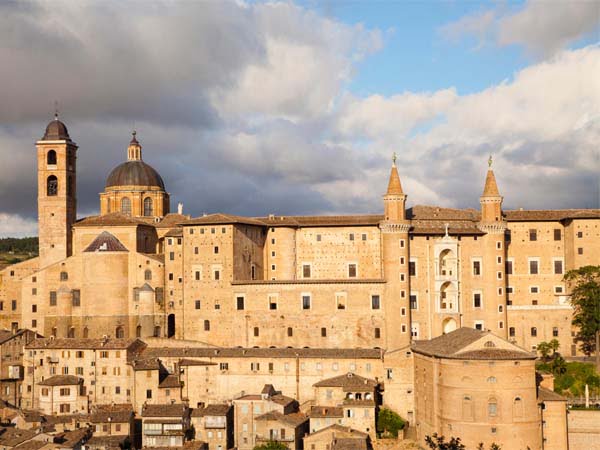

The hilltop city of Urbino, with its Renaissance walls and characteristic brick buildings, would be right at home as the setting of a fairy tale. Located in the Marche region outside of typical traveler routes, the historic center of Urbino— a UNESCO World Heritage Site since 1998 — is a true work of art.
The Palazzo Ducale is without a doubt Urbino’s most stunning monument and one of Italy’s top architectural marvels from the Renaissance period. The palace’s distinctive dual towers rise above the city serving as an integral part of the skyline. The interior of the palace is filled with treasures from the beautiful wood inlay masterpieces of Federico da Montefeltro’s Studiolo to the iconic Renaissance paintings housed in the National Gallery of Marche.
As if all this beauty weren’t enough, Urbino is also home to historic artisan traditions that continue to this day with a focus on ceramics, woodworking, and metalworking. In fact, it’s the very city of Urbino where famed Renaissance artist Raphael was born and made his first brushstrokes in the workshop of his father, a painter in the Duke of Urbino’s court. During a trip to Urbino, do not miss the chance to visit Casa Rafaello, birth house of Raphael, to learn more about the painter’s life and admire one of his first frescoes, Madonna con Bambino.
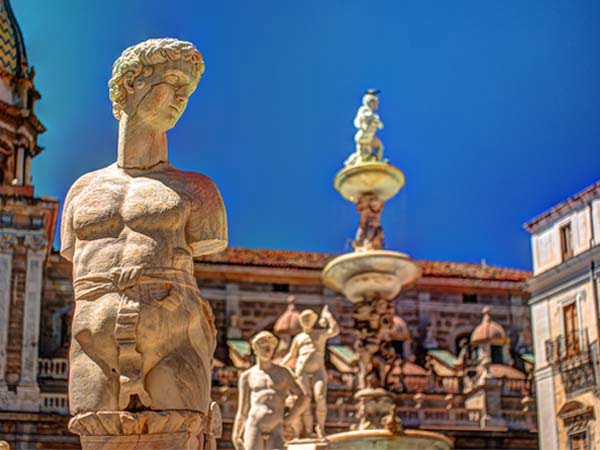

Palermo, the lively capital of Sicily, is the perfect starting point for any trip to Italy’s largest island. Due to Palermo’s strategic location and natural port, the city was an alluring target of conquest for the many powers that attempted to control the Mediterranean over the centuries.
The Romans, Arabs, Normans, and other conquerors all left their mark on the city. In fact, the diverse artistic traditions and architectural styles present throughout Palermo’s city center — and sometimes even in the same building — provide a visual representation of the city’s vast history.
Truly, Palermo is a treasure trove of wonders from the golden mosaics of the Palatine Chapel to the majesty of the Palermo Cathedral with its Norman, Moorish, Gothic, Baroque, and Neoclassical architectural elements.
Together with the art and history, Palermo has a vibrant culture all its own. To best experience daily life in Palermo, travelers must visit one of the city’s open-air markets, such as Ballarò, which can be best described as beautifully chaotic.
To top it all off, Palermo is also one of Italy’s best street food destinations and the birthplace of many Sicilian street foods. Classic offerings include the simply divine arancine as well as panelle, pani câ mèusa, and sfincione.
For a unique evening in Palermo, attend an opera, ballet, or concert at the legendary Teatro Massimo. This elegant opera house, the largest in Italy, is renowned for its heavenly acoustics.
Finally, a trip to Palermo is not complete without a stop in Monreale, a town that overlooks Palermo and offers picturesque views of the bay. Monreale’s Cathedral, with its Norman architecture and remarkable gold mosaics, is among Sicily’s most important cultural monuments.


One of Italy’s more recent wine areas, Franciacorta, is tucked away in the Lombardy region of Northern Italy between scenic Lake Iseo and historic Brescia. The territory is best known for the production of Franciacorta wine, a sparkling white wine created following the metodo classico (traditional method), which features a second fermentation directly in the bottle — the same method used to make Champagne in France. This production method sets Franciacorta apart from other Italian sparkling wines, such as Prosecco.
Though wine has been produced in the area for centuries, Franciacorta sparkling wine dates back to the 1960s and it received DOC status that same decade. Following the wine’s DOCG certification in 1995, appreciation of Franciacorta began to increase, first in Italy then worldwide.
Today, the Franciacorta area is an excellent destination for wine lovers who have already explored some of Italy’s top wine regions, such as Tuscany and Piedmont, as well as travelers visiting Northern Italy who would like to learn more about local wine. Active travelers may also enjoy visiting the wineries aboard e-bikes.
In addition to the wineries, be sure to take a boat ride along quaint Lake Iseo and spend time in Brescia’s city center, which boasts an ample artistic and historic legacy. If there’s still time, stop by Franciacorta Village, one of the largest outlet malls in Northern Italy.
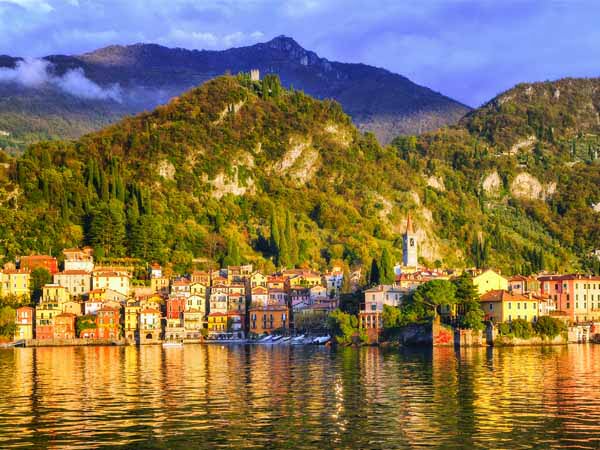

Splendid Varenna is without a doubt the Lake Como village that holds a very special place in our hearts. After a day of exploring Lake Como, or perhaps visiting the Castello di Vezio, you must stop by one of Varenna’s lakeside cafés to admire the gorgeous sunset while sipping an Italian aperitivo.
As the sun sets behind the mountains, the small towns on the opposite shore begin to light up, imparting silvery reflections on the waters of the lake. With just one sunset, Varenna reveals its beauty and secures its place as one of Lake Como’s most beautiful towns.
More tranquil than bustling Bellagio, which is located just across the lake, Varenna embodies the charm of Lake Como; the town offers an alluring respite amid the gentle blue waters of the lake and the embrace of the surrounding mountains. After a leisurely stroll along the romantic lakeside promenade that leads to the town center, admire the iconic architecture of the Church of San Giorgio and visit the stunning botanical gardens of Villa Monastero.
No matter where you go in Varenna, the spectacular views of the lake will accompany you. From the unrivaled beauty to the peaceful atmosphere, Varenna and the entire Lake Como area leave travelers with cherished memories that last a lifetime.
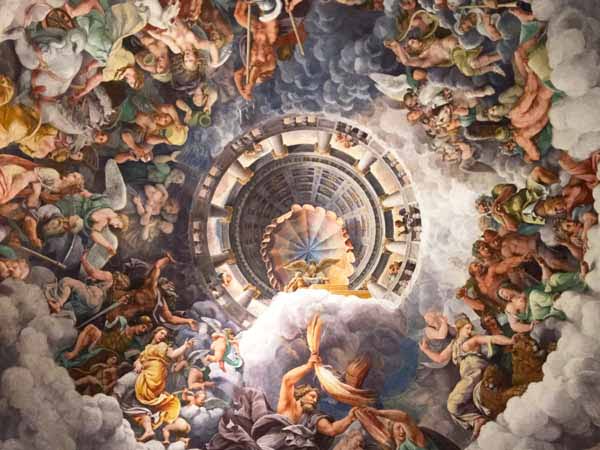

Perhaps it’s the position on a bend of the Mincio River that gives the territory the appearance of an island or the frequent fog in the Po Valley, but when one arrives in Mantua, the city still resembles the historic duchy that flourished under the rule of the House of Gonzaga. At that time, Mantua’s influence throughout Europe ensured that the duchy become one of Northern Italy’s principal artistic and cultural hubs.
Numerous monuments that still stand attest to Mantua’s fervid cultural activity. Among these, travelers should not miss the Palazzo Ducale, a large complex revered for its exquisite architecture, verdant gardens, and rich interiors that feature prized paintings, tapestries, and famed frescoes by Andrea Mantegna in the Camera degli Sposi.
16th century Palazzo Te is another of Mantua’s gems, providing a prime example of the Mannerist style. After admiring the stately rooms and halls of the palace with their beautiful frescoes, take a moment to unwind in the surrounding park.
A visit to Mantua is incomplete without making a pit stop at one of the many restaurants in the city center to try local specialties such as tortelli di zucca, mostarda, and the delicious sbrisolona cake.
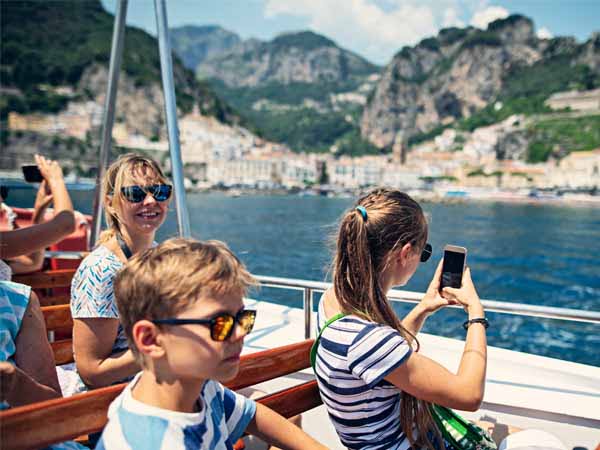

Amalfi — the eponymous town of the most iconic coast in Italy, and a UNESCO World Heritage Site together with the other towns of the Amalfi Coast. Thanks to the city’s renowned beauty and tranquil atmosphere, Amalfi is the perfect place to familiarize oneself with the lifestyle of the Amalfi Coast.
In an area filled with charm, Amalfi stands out thanks to its illustrious past as a Maritime Republic. Together with Pisa, Genoa, and Venice, Amalfi was among the most powerful medieval republics of the Mediterranean controlling the commerce of lumber, spices, gold, and gemstones.
Today, Amalfi is the quintessential beach city with an economy based on tourism and the cultivation of the Limone Costa d’Amalfi IGP (Amalfi Coast lemon), which is an integral part of the local cuisine.
The beautiful Romanesque and Baroque Duomo is Amalfi’s most important monument. Towering above the center of town, the Duomo is renowned for its majestic architecture and striped façade. Surrounding the church are small shops where travelers can taste limoncello, admire the colorful local ceramics, and try on handmade sandals embellished with coral and gems.
Another artisan tradition that dates back to the Middle Ages is Amalfi’s distinguished and highly-revered paper production, whose secrets are enclosed in the Museo della Carta.
It’s impossible to be bored in Amalfi. From visiting the lemon groves and attending a cooking class (featuring lemons, of course) to a day spent at the beach or on a boat excursion to other Amalfi Coast towns such as Positano, Ravello, and Vietri sul Mare, Amalfi is synonymous with la dolce vita.
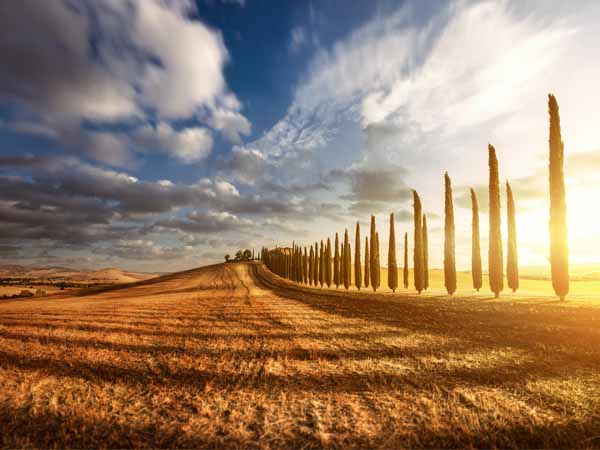

Of course, this list would not be complete without mentioning Tuscany! The Val d’Orcia area, which is also a UNESCO World Heritage Site due to its panoramic beauty and harmony between architecture and nature, embodies the evocative imagery of Tuscany: a landscape consisting of gentle hills, rows of cypress trees, and small medieval churches.
Positioned south of Siena, the picturesque Val d’Orcia area consists of several villages including Montepulciano, Montalcino, Pienza, and San Quirico d’Orcia.
The hilltop town of Montepulciano is renowned for its medieval and Renaissance architecture, artisan workshops, and wine cellars located under historic buildings. Montepulciano is also where the critically acclaimed Vino Nobile di Montepulciano DOCG wine is produced.
Montalcino is a charming hilltop town with Etruscan origins whose current appearance dates back to the Middle Ages. The surrounding vineyards produce the renowned Brunello di Montalcino DOCG wine, made exclusively with local Sangiovese grapes.
Pienza, designed as an ideal Renaissance city following the vision of Pope Pius II, is immersed in one of Tuscany’s most beautiful landscapes with the iconic rolling hills and lush cypress trees of the Val d’Orcia area. After taking in the striking architecture, be sure to taste Pienza’s other claim to fame: Pecorino di Pienza, a delicious sheep’s milk cheese.
Also surrounded by the picturesque landscapes of Val d’Orcia is San Quirico d’Orcia. Inside the walls of this quaint village, travelers will find beautiful medieval churches and the charming atmosphere that is unique to Tuscany. Bagno Vignoni, a hamlet of San Quirico d’Orcia, is revered for its hot springs (a popular attraction since Roman times) and medieval architecture.
If you’ve ever dreamed of being pampered in a lavish historic castle or luxury spa resort, soaking up the sun poolside, savoring romantic dinners, sipping the best Tuscan wines, or perhaps enjoying a round of golf or horseback riding, the jaw-dropping views and natural ambience of this region couldn’t be more perfect. If you prefer a rustic or immersive experience, you must not feel left out as there are plenty of countryside agriturismos, farmhouses, and private villas that embody pure Tuscan character and charm. Just like the rest of Tuscany, Val d’Orcia offers a variety of unique experiences, from winery visits and wine tastings to cooking classes and food tours, all of which travelers can enjoy regardless of their chosen accommodations.
Without a doubt, the Val d’Orcia area is a haven for wine lovers or anyone who wishes to experience the beauty of the Tuscan countryside.
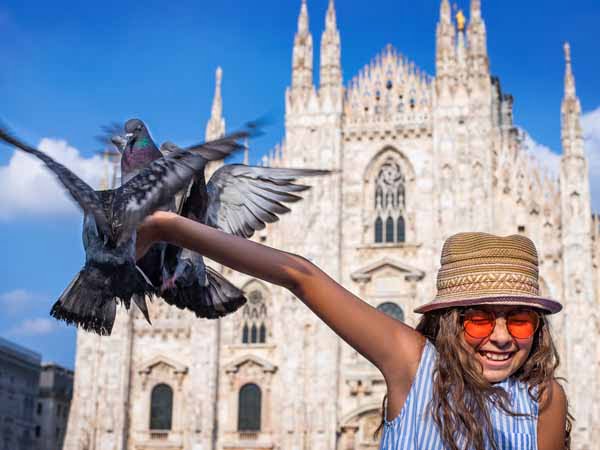

As one of Italy’s largest cities, Milan has attracted visitors for centuries. However, since hosting Expo 2015, Milan has transformed from primarily a business city to one of the top travel destinations in Northern Italy.
There are plenty of artistic pearls to admire in the historic city center including the Duomo — among the most stunning Gothic cathedrals in the world — as well as the Galleria Vittorio Emanuele II, legendary Teatro alla Scala, and Castello Sforzesco, a 15th century castle that now hosts museums and Michelangelo’s final sculpture, Pietà Rondanini.
Art lovers shouldn’t miss Leonardo’s iconic fresco Last Supper or a number of fascinating museums located throughout the city including the Triennale Design Museum and Palazzo Reale.
As a world-renowned fashion and design capital, Milan exudes elegance and is a highly-revered creative hub. There is no better example of this than the Brera district. Home to the city’s Academy of Fine Arts and the prestigious Pinacoteca di Brera with masterpieces by Andrea Mantegna, Raphael, and Giovanni Bellini, Brera has been Milan’s self-proclaimed artist neighborhood for centuries — rivaling the likes of Paris’s Montmartre. Enjoy a stroll through Brera’s historic streets to visit charming boutiques, trendy restaurants, and indulge in the bohemian atmosphere.
After a day full of sightseeing, head to the Navigli area — the center of Milan’s night life — and enjoy an aperitivo like a true Milanese. The city of Milan is now home to modern neighborhoods, such as Porta Nuova and CityLife, where new skyscrapers and innovative architecture, including Bosco Verticale (a residential high-rise garden), abound.
A perfect blend of old and new, Milan has undergone an impressive revitalization to become one of Italy’s leading modern cities.
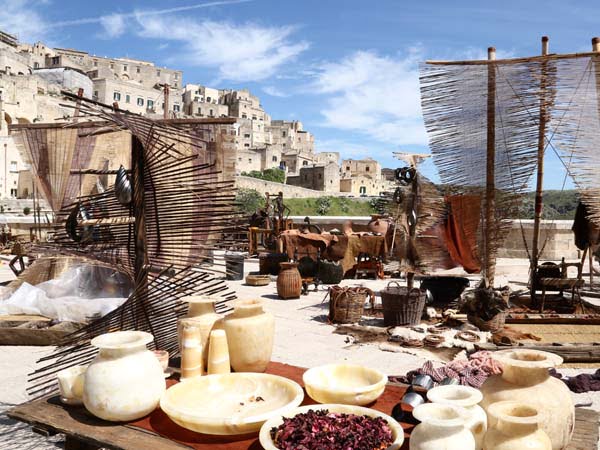

Saving the best for last, Matera is a destination unlike any other. As one of the oldest continuously inhabited settlements in the world, Matera is famous for its distinct architecture consisting of ancient cave dwellings called Sassi di Matera (Stones of Matera).
Sitting at an elevation of more than 1,300 feet, the historic beige buildings of Matera’s city center soar over the surrounding area, offering incredible views of Basilicata’s countryside. However, the best views are those of the city itself.
Due to the natural geography of the area, the center of Matera is characterized by undulating streets with remarkable scenes waiting behind every corner. There are countless points throughout the city where travelers will stumble upon panoramas of the Sassi that simply take one’s breath away.
As a result of the city’s rich history, there are several monuments to admire including the Matera Cathedral and cave churches. Matera’s cave houses were inhabited by the locals until the 1950s; then, towards the end of the 20th century, the Sassi were revitalized in an effort to transform Matera into an attractive travel destination — and it worked.
A few of the cave houses are now museums that provide an intimate look at what daily life was once like in this remarkable city. Other original cave dwellings have been converted into restaurants and hotels to provide full immersion into the city’s unique culture.
Italy may be filled with beautiful places, but Matera’s fairy-tale atmosphere must be seen to be believed.
Soon We’ll Make Dreams Happen…
We hope these places have inspired you to continue dreaming about your next Italian adventure! Though this list is by no means exhaustive, it provides an attractive sample of the many destinations waiting to be discovered throughout Italy this year. Most of the listed places are surrounded by other must-visit cities or attractions that can easily be reached within minutes or up to a few hours. If any of these destinations has inspired you, when travel resumes our travel experts will be happy to assist with planning the best route and itinerary for your Italian experience of a lifetime.
